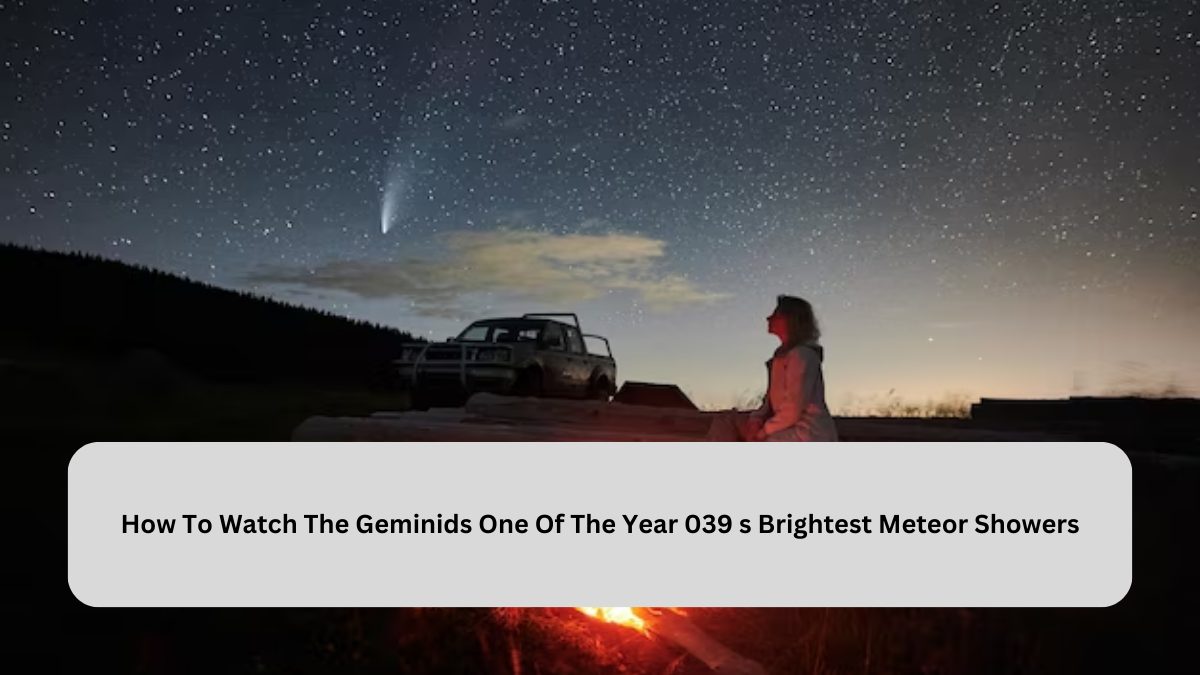How to Catch the Geminids Meteor Shower at Its Brightest: Your Guide to a Celestial Spectacle
Hey there, stargazers! Are you ready for a celestial showstopper? The Geminids meteor shower, arguably the best meteor shower of the year, is coming, and I’m here to help you make the most of it. Forget those blurry smartphone photos you see online; I’m talking about an experience that will leave you breathless, a memory etched in your mind long after the last shooting star fades. This isn’t just about seeing a few streaks of light; it’s about connecting with the vastness of space and feeling truly awestruck.

This guide is your personal roadmap to witnessing the Geminids at their absolute brightest. We’ll cover everything from choosing the perfect viewing spot to understanding the science behind this dazzling display. So grab your warmest blanket, a thermos of hot cocoa (optional, but highly recommended!), and let’s dive in!
Understanding the Geminids: More Than Just Shooting Stars
Before we get into the practicalities of meteor shower viewing, let’s talk a little about what makes the Geminids so special. Unlike most meteor showers that originate from comets, the Geminids are caused by an asteroid, 3200 Phaethon. This asteroid leaves a trail of dusty debris in its wake as it orbits the sun. As Earth passes through this debris field, the particles burn up in our atmosphere, creating those breathtaking streaks of light we call meteors.
What sets the Geminids apart is their sheer brilliance and frequency. While other showers might offer a few dozen meteors per hour, the Geminids can boast a phenomenal 120-150 meteors per hour at their peak! That’s a meteor almost every minute – a truly unforgettable sight. And these aren’t your faint, fleeting streaks; many Geminid meteors are bright and colorful, leaving vibrant trails across the night sky.

Remember that famous scene in a movie where characters lie back and watch shooting stars? That’s the Geminids experience, amplified.
Timing is Everything: Peak Viewing Dates and Times
The Geminids typically peak around December 13th-14th each year. However, the exact peak time can vary slightly, so checking a reliable astronomy website or app closer to the date is crucial. These resources will provide the most up-to-date predictions for the shower’s peak activity in your specific location.
Why is knowing the peak time so important? Because that’s when you’ll see the highest number of meteors. Even a few hours before or after the peak can significantly reduce the number of visible meteors. Think of it like attending a concert – you want to be there for the main act, not the opening band!
Location, Location, Location: Finding Your Perfect Dark Sky Spot
This is arguably the most crucial aspect of Geminids viewing. Light pollution is the enemy of stargazing. City lights wash out the fainter meteors, dramatically reducing the number you can see. To maximize your experience, you need to escape the urban glow and find a location with minimal light pollution.

Here’s how to find the perfect spot:
- Dark Sky Maps: Use online resources like DarkSiteFinder or LightPollutionMap to identify areas with low light pollution near you.
- Rural Areas: Head out to the countryside, away from city lights. National parks, forests, and rural areas are ideal.
- Elevation: Higher elevations often offer clearer skies and less atmospheric interference.
- Open Space: Choose a location with a wide, unobstructed view of the sky. Avoid trees, buildings, and hills that might block your view.

I remember one year, I drove an hour out to a remote mountain pass with a friend. The silence, the cold air, and the sheer number of stars were incredible. We saw meteors streaking across the sky every few seconds – it was magical. Finding that perfect spot is half the adventure!
Gear Up for the Show: What to Bring for Optimal Viewing

While you don’t need any fancy equipment to enjoy the Geminids, a few essentials can significantly enhance your experience:
- Warm Clothing: December nights can be bitterly cold, especially in areas with high elevation. Dress in layers, including a warm hat, gloves, and scarf.
- Blanket or Camping Chair: You’ll be lying down or sitting for a while, so comfort is key.